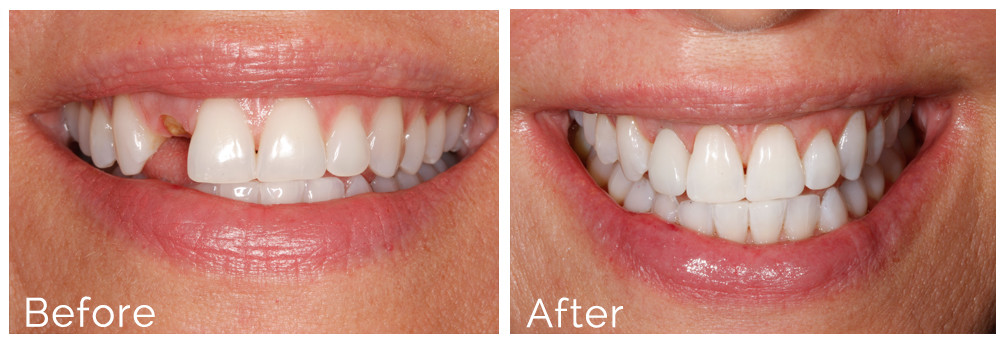4 Easy Facts About Dental Sense Shown
4 Easy Facts About Dental Sense Shown
Blog Article
All about Dental Sense
Table of ContentsRumored Buzz on Dental SenseFascination About Dental SenseNot known Incorrect Statements About Dental Sense Excitement About Dental Sense
are medical tools operatively dental implanted right into the jaw to recover an individual's capability to chew or their appearance. They offer assistance for artificial (fake) teeth, such as crowns, bridges, or dentures. When a tooth is shed as a result of injury or disease, a person can experience problems such as fast bone loss, faulty speech, or changes to chewing patterns that lead to pain.Dental dental implant systems contain a dental implant body and oral implant joint and may additionally consist of a joint addiction screw. Dental implants. The oral implant body is surgically put in the jawbone instead of the tooth's origin. The dental implant joint is typically connected to the implant body by the joint fixation screw and prolongs with gums right into the mouth to support the attached synthetic teeth
(https://www.storeboard.com/dentalsense)Structure of The Oral Implant System selecting oral implants, speak with your dental company about the potential benefits and threats, and whether you are a prospect for the procedure. Things to take into consideration: Your overall health and wellness is a crucial factor in establishing whether you are an excellent candidate for oral implants, how long it will certainly take to heal, and exactly how long the dental implant may remain in area.
Smoking might influence the healing procedure and lower the long-term success of the implant. The healing procedure for the implant body might take numerous months or longer, throughout which time you commonly have a temporary joint in place of the tooth. the oral implant procedure: Meticulously adhere to the oral health directions provided to you by your oral provider.
Dental Sense Things To Know Before You Get This
Implant failure can lead to the need for an additional surgery to fix or change the implant system. Restores the ability to eat Recovers aesthetic appearance Assists maintain the jawbone from reducing due to bone loss Maintains the wellness of the surrounding bone and gums Assists keep surrounding (neighboring) teeth steady Boosts lifestyle Damage to bordering all-natural teeth throughout dental implant placement Injury to the surrounding tissues during surgical procedure, such as sinus opening Injury throughout surgical treatment (as an example, crack of bordering jawbone) Inadequate feature, such as feeling like the teeth do not bite with each other normally A feeling that the tooth is loose or turning in position arising from an abutment screw loosening up Implant body failure (looseness of the implant body) as a result of systemic infection, which might be more probable in people with uncontrolled diabetics issues because of neighborhood infection in bone and periodontals supporting the implant body because of delayed recovery, which may be a lot more likely in patients who smoke Problem cleaning up the gums around the dental implant, leading to inadequate dental hygiene Unattended gum condition Post-surgical pins and needles because of nerve impingement or damages Always notify wellness care providers and imaging service technicians that you have dental implants prior to any type of magnetic vibration imaging (MRI) or x-ray procedures.
FDA is not familiar with any kind of unfavorable occasions reported for MRI or x-ray treatments with oral implants. Oral implants systems are typically made of products that follow global agreement requirements of the International Organization for Standardization (ISO) or ASTM International. These standards have details of what makes a safe material.

A dental implant is a structure that changes a missing out on tooth. With screw-like devices, the cosmetic surgeon inserts an implant right into the jawbone, and it works as an anchor for a fabricated tooth, called a crown. A device called an abutment links the artificial tooth to the oral implant. The crown is customized to fit the individual's mouth and match the color of their teeth.
Dental Sense - Questions
Some people are not qualified for dental implant surgery. It is for dental surgeons to operate people with: severe illnessuncontrollable metabolic diseasebone or soft cells condition or infectionIf these problems are dealt with, a person can have the surgical procedure. In, dental surgeons refrain from operating people with: If people with any of the above go through oral implant surgery, there is a greater risk of the dental implant failing.

Oral implant surgery is a personalized procedure. It's not the same for everyone. The complying with provides a general overview of what you can expect your dental professional, oral surgeon, periodontist or prosthodontist to do: Place the dental implant operatively. Give you time to recover. Attach the blog post and last crown, bridge or denture.
Next, your cosmetic surgeon will carefully place the oral implant right into your jaw. Finally, your specialist will certainly rearrange your gums and close the incision with stitches. If your implant is near the front of your mouth, Extra resources your dental professional will make a short-term tooth for you to wear up until you recover. In this way, you will not have a space in your smile while you recuperate.
Dental Sense Can Be Fun For Anyone
Throughout the recovery phase, your jawbone needs to fuse to the oral implant. This process can take anywhere from three to 9 months.
Once your implant heals, your dental expert can attach the abutment (small adapter article) and your last remediation (crown, bridge or denture). This normally takes about one hour to complete and may need a 2nd small surgical procedure. You should not feel any kind of discomfort throughout your oral implant treatment because your provider will certainly use medicine to numb your periodontals.
Report this page